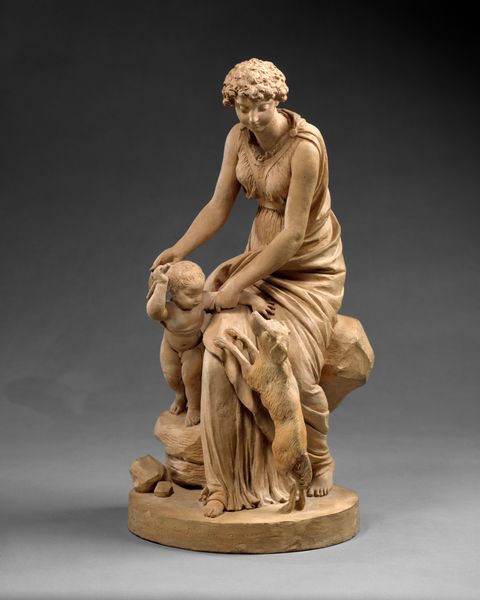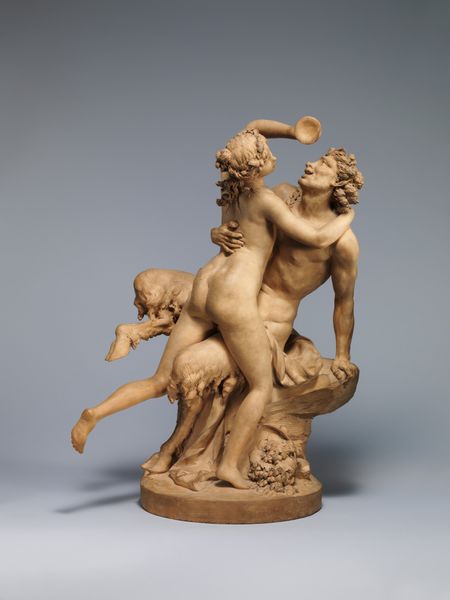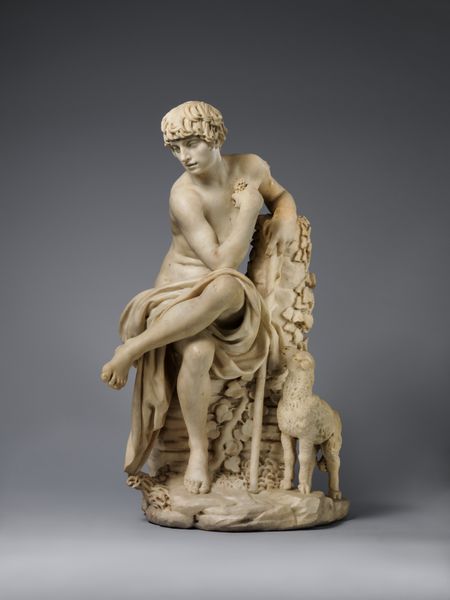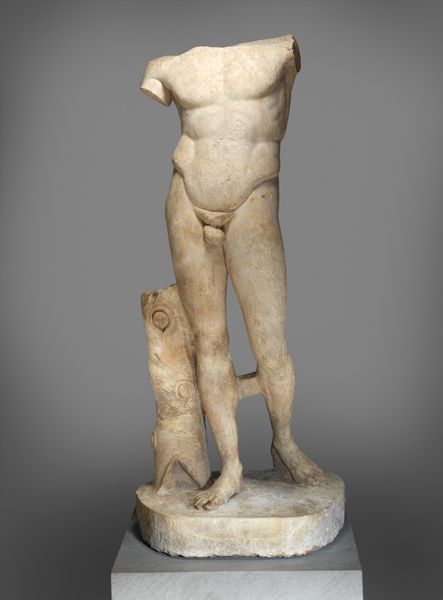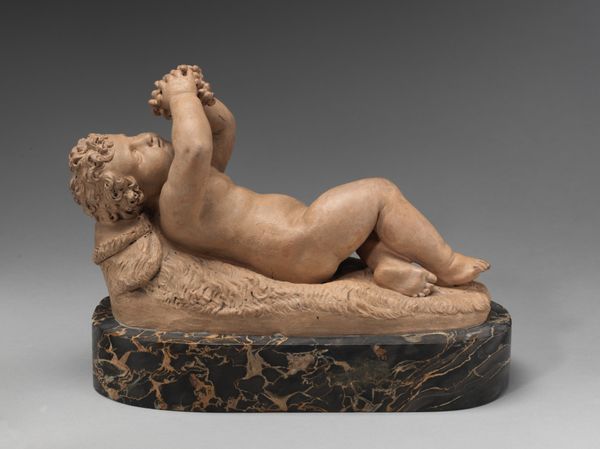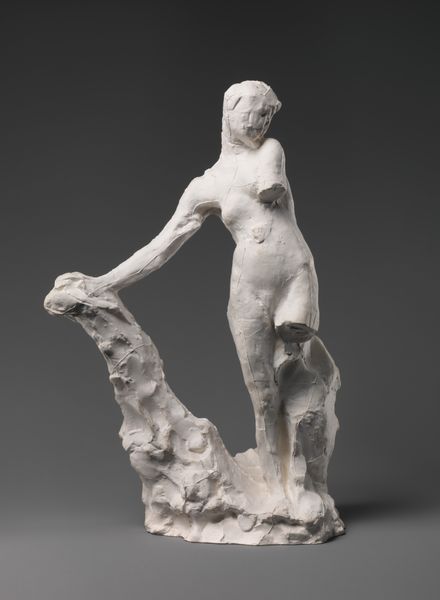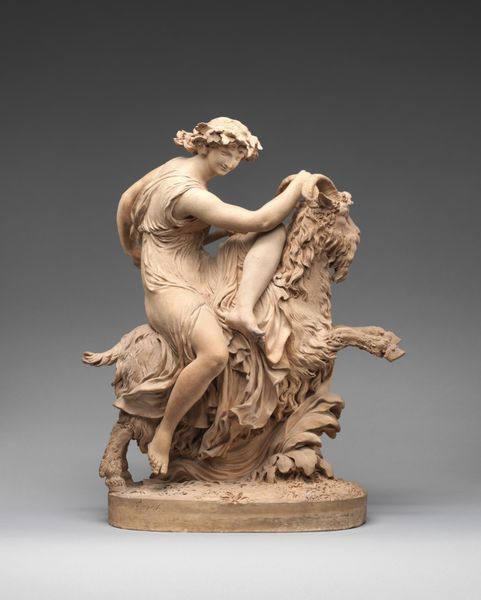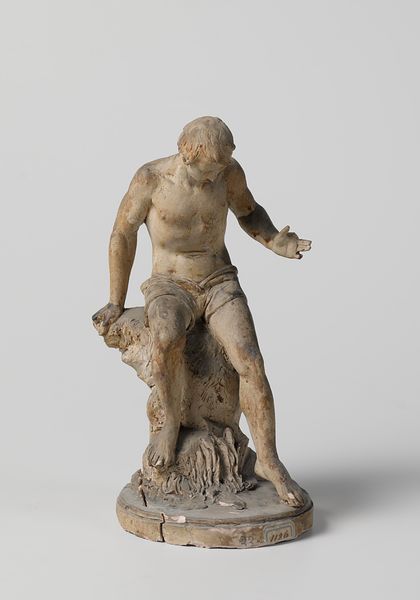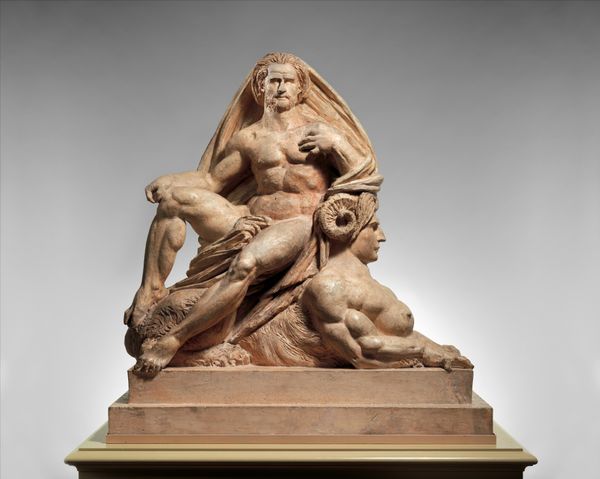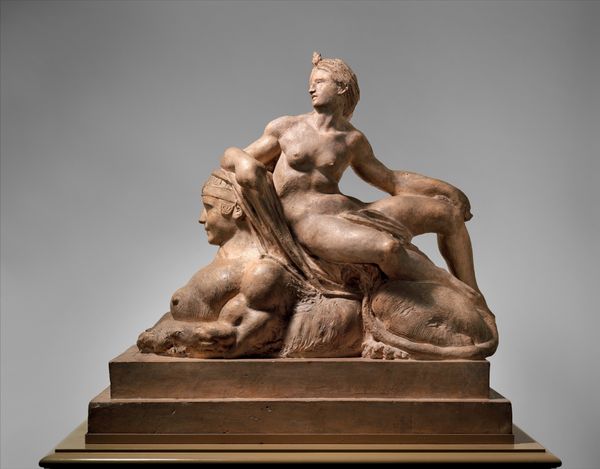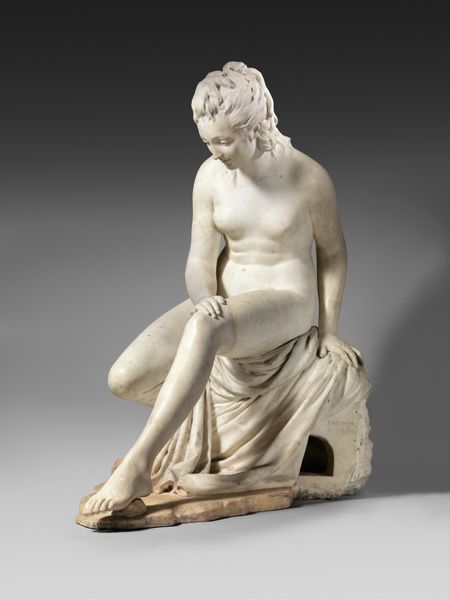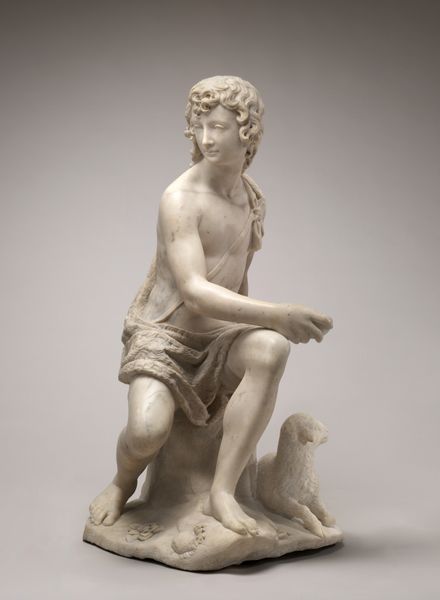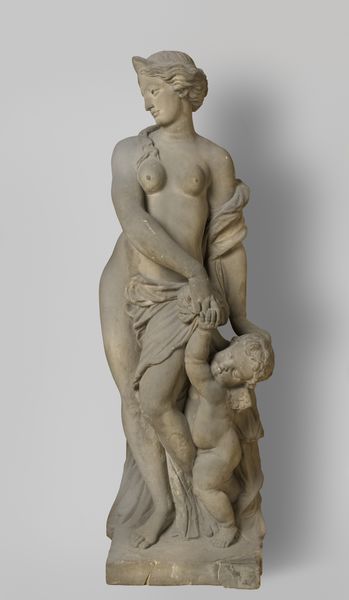
Marble statue of Dionysos seated on a panther 1 - 299
0:00
0:00
sculpture, marble
#
portrait
#
animal
#
sculpture
#
greek-and-roman-art
#
sculptural image
#
figuration
#
roman-art
#
ancient-mediterranean
#
sculpture
#
marble
Dimensions: Overall: 56 3/8 in. (143.2 cm) Storage (weight on standard pallett): 843lb. (382.4kg)
Copyright: Public Domain
Editor: Here we have a marble statue from the 1st to 3rd century CE, titled "Marble statue of Dionysos seated on a panther". It looks so serene and sensual, but something about Dionysos casually lounging on the panther seems to challenge power dynamics. What do you see in this piece? Curator: The sensuality and seeming nonchalance you’ve identified offer us a compelling entry point. This statue exists within a complex history of power, gender, and representation. Consider how Dionysos, the god of wine and ecstasy, challenges conventional ideas of masculinity in Roman society. Editor: How so? Curator: Well, the figure's relaxed pose and the inclusion of traditionally feminine attributes—the wreath, the smooth skin—destabilize Roman ideals of masculine strength and control. And the panther isn't just an animal; it's a symbol of Dionysian revelry and liberation. What happens when you put him in conversation with existing dominant paradigms of power? Editor: I see what you mean! It's like the artist is playing with symbols of status and authority, but twisting them somehow. Curator: Precisely. The statue encourages a re-evaluation of what power looks like, who gets to wield it, and how those roles might be subverted or transformed through artistic expression. Editor: I never would have thought of that. So, it’s not just a pretty statue, it’s actively questioning social norms. Curator: Absolutely. It serves as a reminder that art, even from antiquity, can engage in conversations about identity, resistance, and the ongoing negotiation of power. Editor: That really gives me a lot to think about! I'll definitely look at ancient art differently from now on.
Comments
No comments
Be the first to comment and join the conversation on the ultimate creative platform.

